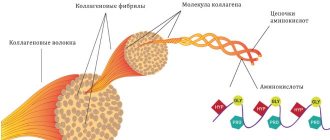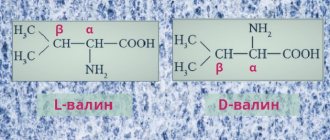Omega-3 fatty acids have numerous scientifically proven health benefits. Among them: anti-inflammatory effects, reduced risk of cardiovascular disease, dementia and cancer, benefits for eye and kidney health, protection against muscle catabolism.
The recommended daily dose of omega-3 ranges from 500 mg to 2000 mg 1,2 (there is no consensus). It can be obtained from dietary supplements or food products.
Below is a list of foods rich in omega-3, as well as a table comparing their omega-6 and omega-3 fatty acid content.
When choosing foods that provide omega-3s, it is important to understand that there are different forms of omega-3s and not all are created equal. See more: What are omega-3 fatty acids good for? Scientific research.
Main thoughts:
In terms of contamination with mercury and other toxins, the best sources of omega-3 are those species of fish that live off the bottom (the closer to the surface, the better) and also feed on algae (they are not predators)
The best natural foods containing active forms of omega-3 (DHA and EPA) are fish and seafood: sardines, cod, salmon, fish roe, oysters, anchovies and seaweed.
The best plant foods that contain high amounts of omega-3 are flaxseed oil and seeds, chia seeds, walnuts, soy and hemp seeds. Omega-3 is present in them in the inactive and therefore not very healthy form of ALA
Mackerel (4107 mg per serving)
If you're wondering which foods have the most omega-3s, look no further than a familiar fish called mackerel.
Mackerel is a small, fatty fish.
In Western countries, it is usually smoked or eaten in a pickled form.
Mackerel is incredibly rich in nutrients - a 100-gram serving contains 200% of the recommended daily intake (RDI) of vitamin B12 and 100% of selenium ().
In addition to the fact that this fish is very healthy, it also tastes delicious.
Omega-3 content : 4107 mg in one piece (80 g) of salted mackerel or 5134 mg for every 100 grams ().
You can learn more about the benefits of mackerel for human health on this page - Mackerel: benefits and harm to the body.
Daily fat intake
The rate of fat consumption depends on the age, sex, type of activity, and gender of the person. Consumption of EFAs should not exceed 10%, MUFAs – 13-15%, PUFAs – 6-10% of daily calories.
For people with cardiovascular diseases, consumption is reduced to an average of 7%. For athletes and those who perform heavy physical work, the level rises to 12-14%.
Salmon (4,023 mg per serving)
Salmon is one of the most nutritious foods on the planet.
It contains high-quality protein and a variety of nutrients, including large amounts of magnesium, potassium, selenium and B vitamins (,).
Research shows that people who regularly eat fatty fish such as salmon have a lower risk of developing diseases and conditions such as heart disease, dementia and depression (, , , ).
Omega-3 content : 4023 mg per half fillet (178 g) of cooked, farmed Atlantic salmon or 2260 mg per 100 grams ().
You can learn more about the benefits of salmon for the human body on this page - Salmon: benefits and harm to the body.
Which fats are really dangerous?
There is still one type of fat that a person should completely exclude from his diet. These are trans fatty acids
, which are found in nature only in small doses and enter the body, usually from processed foods.
Most trans fats are found in margarine and other hydrogenated oils. To produce it, vegetable oil is heated in the presence of hydrogen and a heavy metal catalyst (such as palladium). This causes hydrogen to bond with the hydrocarbon present in the oil and convert the fat from liquid and perishable to a solid and shelf-stable
product.
Unlike saturated and unsaturated fats, trans fats are empty calories that provide no benefit to the human body. On the contrary, a diet high in trans fats contributes to:
- increased bad LDL cholesterol and the development of cardiovascular diseases;
- increased risk of developing colon and breast cancer;
- complications of pregnancy (early labor and preeclampsia) and disorders in infants, since trans fats are transmitted from mother to fetus;
- development of allergies, asthma and asthmatic eczema in adolescents;
- development of type II diabetes;
- obesity (source).
In a 6-year study, monkeys on a trans fat diet gained 7.2% of their body weight, while monkeys on a monounsaturated fat diet gained just 1.8%.
Trans fats are worse than any other fat, including butter or lard. There is no safe level of consumption: even 2% of total calories (4 grams for a goal of 1800 kcal) increases the risk of heart disease by 23%!
The highest amounts of trans fatty acids are found in cakes, cookies and bread (about 40% of total consumption), animal products (21%), French fries (8%), margarine (7%), chips, popcorn, candy and breakfast cereals (5% each), as well as confectionery fat (4%). You'll find it in all foods containing partially hydrogenated oil, most fast foods, frostings, dairy-free creamers, and ice cream. Try to avoid such foods!
Cod Liver Oil (2,664 mg per serving)
Cod liver oil is more of a supplement than a food product.
As the name suggests, it is an oil extracted from the liver of a fish called cod.
Not only is this fat high in omega-3 fatty acids, but it's also rich in vitamin D and vitamin A—one tablespoon contains 338% of the RDA for vitamin D and 270% of the RDA for vitamin A ().
Therefore, taking just one tablespoon of cod liver oil provides your body with huge amounts of three incredibly important nutrients.
However, you should not take more than one tablespoon of this supplement at a time because too much vitamin A can be harmful.
Omega-3 content : 2664 mg per tablespoon ().
Herring (3181 mg per serving)
Herring is a small, fatty fish. Most often it is consumed in salted or pickled form.
Smoked herring is a popular breakfast food in countries such as England, where it is served with eggs.
A standard raw Atlantic herring fillet contains almost 100% of the RDA for vitamin D and selenium and 50% of the RDA for vitamin B12 ().
Omega-3 content : 3181 mg per fillet (184 g) of raw herring or 1729 mg per 100 grams ().
You can learn more about the benefits of salted herring on this page - Salted herring: benefits and harm to the body.
Oysters (565 mg per serving)
Shellfish are some of the most nutritious foods you can eat.
In fact, oysters contain more zinc than any other food on the planet. Just 6-7 raw oysters (100 grams) contain 600% of the RDA for zinc, 200% of the RDA for copper and 300% of the RDA for vitamin B12 (,).
Oysters are usually eaten as a snack. Raw oysters are a delicacy in many countries.
Omega-3 content : 565 mg in 6 raw (84 g) Eastern oysters or 672 mg per 100 grams ().
Healthy fats: food list
Below we have compiled for you a list of foods that contain the most healthy polyunsaturated and monounsaturated fats. All figures are taken from the database for standard reference and are based on 100g of each product. Keep it in mind and use it for your health!
As you can see, natural vegetable oils are the richest and healthiest sources of unsaturated fats. For comparison, we provide you with data on other popular fats, including poultry and fish.
Sardines (2,205 mg per serving)
Sardines are small, fatty fish that are usually eaten as a first course, snack or treat.
They are very nutritious, especially when eaten whole. They contain almost all the nutrients your body needs.
One 149-gram serving of sardines contains more than 200% of the RDA for vitamin B12 and more than 100% of the RDA for vitamin D and selenium ().
Omega-3 content : 2205 mg per 149 gram serving of canned Atlantic sardines, or 1480 mg for every 100 grams ().
You can learn more about the benefits of sardines for human health on this page - Sardines: benefits and harms, calorie content, nutritional value.
Anchovies (951 mg per serving)
Anchovies are tiny, fatty fish that are often purchased dried, salted or canned.
Typically consumed in very small portions, anchovies can be wrapped around capers, stuffed into olives, or used as a topping for pizzas and salads.
Because of their strong flavor, they are also used to enhance the flavor of many dishes and sauces, including Worcestershire sauce, Remoulade, and Caesar salad dressing.
Anchovies are an excellent source of niacin and selenium, and boned anchovies are also rich in calcium ().
Omega-3 content : 951 mg per 45 gram can of European anchovies or 2113 mg for every 100 grams ().
Fish Caviar (1086 mg per serving)
Among the products containing omega-3 fatty acids, fish roe is present in large quantities.
Fish roe is usually considered an expensive delicacy and is most often consumed in small quantities in addition to first courses and as an appetizer.
Caviar is high in choline and exceptionally low in omega-6 fatty acids ().
Omega-3 content : 1086 mg per tablespoon (14.3 g) or 6789 mg per 100 grams ().
What other foods contain unsaturated fats?
Seeds and nuts are ideal foods high in unsaturated fatty acids. You can't eat a lot of butter, can you? And they can be safely used as a snack, which will additionally serve your body as a source of vitamins and other important microelements. Read more in the article The healthiest nuts and their properties.
Flax Seeds (2,338 mg per serving)
Flax seeds are small brown or yellow seeds. They are often ground before consumption or used to obtain flaxseed oil.
These seeds are the richest source of omega-3 fatty acids in the form of alpha-linolenic acid (ALA). Therefore, flaxseed oil is often used as an omega-3 supplement.
Flaxseeds are also very rich in fiber, vitamin E, magnesium and other nutrients. They have an excellent ratio of omega-6 to omega-3 fatty acids compared to most seeds (, , , ).
Omega-3 content : 2,338 mg per tablespoon (14.3 g) of whole seeds or 7,196 mg per tablespoon (14.3 g) of oil (,).
You can learn more about the benefits of flax seeds for the human body on this page - Flax seed: beneficial properties and contraindications, how to take it.
The dangers of Omega-3 deficiency and excess
The spectrum of action of Omega 3 is quite wide: from strong immunity and external beauty to mental state and mental activity. Deteriorating health and an increased risk of viral diseases, especially in autumn and winter, are one of the reasons for the shortage. Omega 3, as a rule, enters the body in combination with Omega 6.
Both substances are necessary and work interconnectedly, acting in opposite ways. For example, Omega 6 increases blood clotting, and Omega 3 thins it. More and more products contain increased levels of Omega 6 compared to Omega 3. An imbalance of these elements can result in inflammatory processes and increased blood pressure.
All these factors increase the load on the heart and cause a heart attack. In addition, when there is a significant difference in the ratio of fatty acids, depression develops. Omega 3 has a positive effect on the structure of brain membranes, which helps keep them healthy and prevents the development of dementia.
The lack of these fats accelerates aging and loss of brain weight in older people. Joint pain and muscle weakness are very often the result of a lack of fatty acids. Omega 3 slows down the process of destruction of collagen fibers in articular cartilage.
Common reasons to review your diet:
- severe hair loss;
- dandruff;
- dry skin and mucous membranes of the eyes;
- blurred vision.
The main symptoms of Omega 3 acid deficiency in children can be characterized as loss of perseverance, memory impairment, decreased performance and concentration. It is difficult for such a child to think logically, hyperactivity and absent-mindedness appear. This phenomenon is quite common.
In such a case, you need to contact your pediatrician to select the recommended norm according to your age and health status. Omega 3 is a healthy fat for the body. Out of ignorance, people try to protect themselves from this type of food, mistakenly believing that this will help lose weight and maintain the health of the body.
You need to differentiate between unhealthy fatty foods and foods rich in healthy fats. By observing the Omega 3 consumption rate, you can provide the body with a full range of useful building materials. It is this element that promotes the production of the hormone leptin, which is responsible for normal weight, metabolism and relieves hunger.
Excess Omega 3 substances is a fairly rare phenomenon, but it is important to know about the negative consequences in this case. Omega 3 reduces blood viscosity, thinning it and reducing clotting. As a result, excess can cause bleeding in the stomach and intestines.
An excess of Omega 3 is indicated by:
- low pressure;
- nausea;
- diarrhea;
- poor health and depression.
Chia seeds (4,915 mg per serving)
Among the foods rich in omega-3 fatty acids are chia seeds, as they are incredibly nutritious. They are rich in manganese, calcium, phosphorus and other nutrients ().
A standard 28-gram serving of chia seeds contains 4 grams of protein, including all eight essential amino acids.
Omega-3 content : 4915 mg per 28 gram serving ().
How to achieve the desired balance between acids in your daily menu
When choosing food products for your daily diet, you should know where and in what proportions a particular acid group predominates.
- Omega-3 predominates in oil products: olive, sunflower, flaxseed, rapeseed oils.
- Omega-6, due to its affinity with saturated acids, predominates in natural animal proteins: all types of meat, milk, eggs.
- Omega-9 is found in large quantities in nuts, legumes and whole grains.
Walnuts (2,542 mg per serving)
Walnuts are very nutritious and rich in fiber. They also contain high amounts of copper, manganese, vitamin E and important plant compounds ().
When consuming them, the peel should not be removed, as it contains a large amount of phenolic antioxidants, which have important beneficial properties.
Omega-3 content : 2542 mg per 28 gram serving, equal to approximately 7 walnuts ().
You can learn more about the benefits of walnuts for human health on this page - Walnuts: benefits and harm to the body.
Soybeans (1241 mg per serving)
Soybeans are a good source of fiber and vegetable protein.
They also contain large amounts of other nutrients, including riboflavin, folate, vitamin K, magnesium and potassium ().
However, soybeans also contain high amounts of omega-6 fatty acids, so they should not be relied upon as the sole source of omega-3s.
Research shows that consuming too much omega-6 can cause inflammation in the body ().
Omega-3 content : 1,241 mg per 86-gram serving of dry roasted soybeans, or 1,443 mg per 100 grams ().
Benefits and harms
The main function of PUFAs is to maintain the functioning of cell membranes, myelin sheaths of organs, transmembrane ion channels, and connective tissue. Once in the body, eicosapentaenoic and docosahexaenoic acids are integrated into the phospholipid layer of cells, improving their functional properties (enzymatic activity, membrane viscosity, permeability, electrical excitability).
Other beneficial properties of PUFAs:
- suppress the synthesis of lipoproteins and triglycerides in hepatocytes, regulating fat metabolism (hypolipidemic effect);
- impart “fluidity” to the cell membrane, preventing heart rhythm disturbances (antiarrhythmogenic effect);
- regulate the content of serotonin in the brain (antidepressant effect);
- increase the sensitivity of receptors to insulin, preventing the development of insulin resistance (type 2 diabetes);
- dissolve exogenous deposits on the walls of blood vessels (hypocholesterolemic effect);
- normalize hormonal levels, improving the course of premenstrual and menopausal syndromes (estrogenic effect);
- potentiate the synthesis of substances (prostaglandins) that suppress autoimmune, atopic and inflammatory processes in the body (anti-inflammatory effect);
- reduce platelet aggregation, which leads to an improvement in blood rheological parameters (antiplatelet effect);
- participate in the construction of the myelin sheaths of the brain (as a structural element), improving attentiveness, memory, psychomotor coordination;
- regulate vascular tone of capillaries, normalizing blood pressure (hypotensive effect);
- prevent the penetration of foreign agents into the body;
- reduce the synthesis of inflammatory mediators (due to integration into the phospholipid layer of cells);
- improve the functional condition of nails, skin, hair;
- participate in the metabolism of B vitamins (thiamine and pyridoxine).
Vitamin F is not synthesized by intestinal microflora, so it must be supplied to the body daily with food or vitamin-mineral complexes.
What other foods are high in omega-3 fatty acids?
Keep in mind that sections 1-8 discuss foods containing the omega-3 fatty acids EPA and DHA, which are found in some animal products, seafood, and algae.
In contrast, sections 9-12 include plant foods that contain omega-3 fatty acids ALA, which are inferior to the other two.
While other foods don't contain as much omega-3 as the foods listed above, many do have decent amounts of these polyunsaturated fatty acids.
These include eggs, meat and dairy products, hemp seeds and vegetables such as spinach, Brussels sprouts and purslane.
Products containing Omega-3
The richest source containing the most Omega 3 is considered to be seafood. But there are other equally valuable sources. The tables provide rankings of Omega 3 content in specific product categories.
Table of foods containing the highest amounts of Omega-3
The following are capable of bringing benefits no less than fish:
- some types of beans;
- vegetable oils;
- vegetables, fruits, berries;
- nuts;
- animal fats;
- seeds.
| Name | % in 100 g of the daily value of 2000 mg | Omega 3 (in mg) per 100 g | ||
| 1 place | Vegetable oils | Linen | 2695 | 53900 |
| Walnut | 520 | 10400 | ||
| 2nd place | Seafood | Red salmon caviar | 340 | up to 6800 |
| Mackerel | 80-265 | 1600-5300 | ||
| Herring | 60-150 | 1200-3000 | ||
| Salmon | 60-130 | 1200-2600 | ||
| 3rd place | Seeds and nuts | Flax seeds (raw) | 1140 | 22800 |
| Walnuts (raw) | 140 | 2800 | ||
| 4th place | Animal fats | Turkeys | 70 | 1400 |
| Pork/chicken | 50 | 100 | ||
| 5th place | Vegetables and greens | Mint (dried) | 130 | 2600 |
| Horseradish | 13.5 | 270 | ||
| Garlic arrows | 5 | 100 | ||
| Sweet pepper | 4-4.1 | 80-82 | ||
| 6th place | Cereals | Oat germ | 70 | 1400 |
| Wheat germ | 35 | 700 | ||
| 7th place | Fruits and berries | Sea buckthorn (fruits and seeds) | 88 | 1760 |
| Black/red currant | 13-15 | 260-300 | ||
| Lemon | 7.5 | 1500 | ||
| 8th place | Legumes | Soybeans | 65-70 | 1300-1400 |
| Chickpeas | 5 | 100 | ||
Table of Omega-3 content in fats and oils
When choosing oils, you should definitely pay attention to quality. Cold-pressed oils and those that have undergone less severe chemical processing retain more beneficial properties. It is important to observe the storage period and conditions. Sun protection is standard.
Omega 3 is found in abundance in oils and grains. The table shows the ratio of grams in products.
Omega 3 has a positive effect on the absorption of fat-soluble vitamins D, E, A, K. It is enough to add a little oil to salads, sauces or consume it in its pure form. It is recommended to consume approximately 20 g of oils daily.
Omega 3 contains the most (table with vegetable oils and fats):
| Name | % in 100 g of the daily value of 2000 mg | Omega 3 (in mg) per 100 g |
| Flaxseed (unrefined) | 2695 to 53.9 | up to 53900 |
| Kedrovoe | 750-800 | 15000-16000 |
| Walnut (unrefined) | 525 | up to 10500 |
| Rapeseed | 400-460 | 8000-9200 |
| Soy (cold pressed) | 350-390 | 7000-7800 |
| Wheat germ | 265-347 | 5300-6940 |
| Mustard | 295 | up to 5900 |
| Rice bran oil | 880 | 1600 |
| Corn | 60 | 1200 |
| Avocado (unrefined) | 45 | 900 |
| Olive (cold pressed) | 20 | 800 |
| Pumpkin | 17-40.5 | 340-810 |
| Sesame | 15 | 300 |
| Palm | 10 | 200 |
| Cotton | 10 | 200 |
| Sunflower (refined/unrefined) | 1.5-9.5 | 30-190 |
| Cocoa butter (unrefined) | 5 | 100 |
| Grape seed | 5 | 100 |
Table of Omega-3 content in nuts and seeds
Depending on the type, nuts and seeds contain approximately 50% healthy fats. Despite their high calorie content, they are almost always included in the diet of a losing weight person. A small amount, about 30 g, is enough to get the substances necessary for the healthy functioning of the body and satisfy the feeling of hunger.
Most fruits can be eaten both fried and raw. But preference should be given to nuts and seeds that have undergone minimal heat treatment. This way they will retain more healthy fats and vitamins. Old, rancid or overcooked nuts not only will not bring any benefit, but on the contrary, they can be harmful and cause severe allergies or poisoning.
Omega 3 is the most abundant (table with nuts and seeds):
| Name | % in 100 g of the daily value of 2000 mg | Omega 3 (in mg) per 100 g |
| Flax (seeds, raw) | 1050-1140 | 21000-22800 |
| Chia (seeds, raw) | 890 | up to 17800 |
| Hemp seeds | 465 | 9300 |
| Walnut (roasted) | 70-140 | 1400-2800 |
| Pecan | 45-55 | 900-1100 |
| Pine nuts (raw) | 25.5-26 | 510-520 |
| Sesame (roasted) | 18.5 | 370 |
| Pistachios | 12.5-13.5 | 250-270 |
| Poppy | 13.5-16.5 | 270-330 |
| Macadamia (raw nut) | 10 | 200 |
| Cashews (roasted) | 8 | 160 |
| Pumpkin seeds (raw) | 6-9 | 120-180 |
| Sunflower seeds (raw/roasted) | 4-9 | 80-180 |
| Chestnut (roasted fruit) | 4.75 | 95 |
| Hazelnuts (raw) | 3-4 | 60-80 |
| Brazilian (raw nut) | 2-5 | 40-10 |
Table of Omega-3 content in green leafy vegetables
There is not much Omega 3 in green leafy vegetables compared to the above products. But the effect on the body together with fiber will bring no less benefits. These elements slow down your metabolism, providing enough energy and nutrients. The feeling of hunger disappears.
With regular consumption of vegetables, weight loss is noticeable. To get the maximum benefit, it is recommended to steam vegetables, but no more than 10 minutes, or fry them in oil for a few minutes. This method improves the absorption of vitamins and minerals included in their composition.
Omega 3 contains the most (table with green leafy vegetables):
| Name | % in 100 g of the daily value of 2000 mg | Omega 3 (in mg) per 100 g |
| Tarragon (tarragon) | 18 | 360 |
| Basil (dried) | 16 | 320 |
| Spinach (sauteed) | 14.5 | 290 |
| Arugula (fried) | 7.5-8.5 | 150-170 |
| White cabbage (stewed)/Brussels sprouts (stewed) | 4/12.5 | 80/250 |
| Lettuce (fresh) | 3 | 60 |
| Leeks (fried) | 2.1 | 42 |
| Onion (greens) | 1 | 20 |
| Broccoli (steamed) | 1 | 20 |
| Cheremsha | 1 | 20 |
| Celery (greens) | 0.9 | 18 |
| Kohlrabi (boiled) | 0.6-1.3 | 13-27 |
| Kelp | 0.6 | 12 |
| Dill (dried) | 0.5 | 10 |
Other Natural Sources of Omega-3
You can fully enrich your body with fatty acids by including a wider variety of healthy foods in your diet.
Help you avoid shortages:
- fish;
- cheeses;
- eggs;
- bird;
- meat;
- milk;
- some types of spices.
The quantity will depend on the quality, production and processing of the food. Omega 3 is found most in fish that are caught naturally and not artificially grown. Animals grazing in a meadow and having access to fresh grass will benefit much more.
Omega 3 contains the most (table with other products):
| Name | % in 100 g of the daily value of 2000 mg | Omega 3 (in g) per 100 g |
| Cod liver | 985 | 19700 |
| Butter (butter/ghee) | 15.5/75 | 310/1500 |
| Coho salmon | 71-79.5 | 1420-1590 |
| Soybeans | 66.5 | 1330 |
| Beef/duck fat | 53.5/50 | 1070/1000 |
| Trout | 45 | 900 |
| Roquefort (cheese) | 35 | 700 |
| Pork | 24.5 | 490 |
| Boiled egg/raw egg | 22.5/5 | 450/100 |
| Thyme (dried) | 22 | 440 |
| Rosemary (dried) | 20.5 | 410 |
| Gouda (cheese) | 20 | 400 |
| Mozzarella | 18.5 | 370 |
| Wild rice | 15 | 300 |
| Chicken/beef liver | 15/10 | 300/200 |
| Feta | 13 | 260 |
| Sour cream | 13 | 260 |
| Horseradish | 13 | 260 |
| Tofu | 8-12 | 160-240 |
| Prunes | 10 | 200 |
| Cauliflower | 6 | 120 |
| Figs (dried fruits) | 4.8 | 97 |
| Potato | 4.65 | 93 |
| Champignon | 4 | 80 |
| Cow/goat milk | 3.75/2 | 75/40 |
| Raisin | 2.5 | 50 |
Summarize
- As you can see, it's relatively easy to get plenty of omega-3 fatty acids from whole foods.
- Omega-3 fats have numerous beneficial properties, such as fighting inflammation, Alzheimer's disease and cancer.
- However, if you don't eat many of these foods and think you are lacking omega-3s, consider adding these foods to your diet or consider taking an omega-3 supplement.
Tags: Omega-3
- Related Posts
- Foods that lower testosterone in men and women
- Is it possible to eat honeycombs? Benefit, application, harm
- Refined carbohydrates: harm, list of products
« Previous entry
Saturated and unsaturated fats: difference, ratio in the diet
As you probably know, the fat we eat comes in two main forms: unsaturated and saturated. Both types provide approximately the same amount of calories. Therefore, to lose weight, it doesn’t matter what fats you eat. Too many calories? This means that you will gain weight, regardless of whether healthy fatty acids enter your body or not.
What's the difference between saturated and unsaturated fats, and why are some better than others?
The term “saturated” refers to the number of hydrogen atoms that surround each carbon atom in fat. The more hydrogen, the more saturated the fat. In reality, this is expressed as follows: saturated fats become solid
(remember how, after frying meat, bacon or lard, melted animal fat in a frying pan gradually solidifies), while unsaturated fat remains
fluid
(like most vegetable oils).
The ability of saturated fats to harden is widely used in the production of confectionery and bakery products. Composed of butter, palm oil and milk fat, they are found in all kinds of desserts, cakes, pastries and various pastries. Other sources of saturated fat include meats, cheeses and other whole milk products, and coconut oil.
Is saturated fat harmful to human health?
In fact, research has not yet collected enough evidence that saturated fat increases the risk of heart disease. There is incomplete evidence that excessive consumption of these hardening fats contributes to increased total cholesterol, plaque buildup in the arteries, and an increased risk of colon and prostate cancer. 2 large studies have shown that replacing saturated fat with polyunsaturated fats and high-fiber carbohydrates actually reduces the risk of heart disease (while a diet high in processed carbohydrates does the opposite).
However, humans have evolved to consume unprocessed forms of saturated fat (game meat, whole milk, eggs, coconuts) along with fish and plant foods. Therefore, some of them should also be present in our diet, at least for:
- reducing levels of lipoprotein (a), high levels of which increase the risk of heart disease;
- cleansing the liver of fat (saturated fat stimulates liver cells to release it);
- brain health (most of the brain and myelin sheath is made of saturated fat);
- proper functioning of the immune system (saturated fats such as myristic and lauric acids play an important role in maintaining immunity and are even found in mothers' breast milk).
The correct ratio of unsaturated and saturated fats in the diet
Due to the availability of animal products and the low prevalence of whole plant foods on the market today, people have become consuming too much saturated fat in relation to unsaturated fat. And what's even worse is to combine them with processed carbohydrates, which usually leads to health problems.
If total fat in a person's diet should be 20-35% of all calories, then saturated fat should not be more than 10% (about 20 grams with a goal of 1800 Kcal/day). This is the ratio recommended by the WHO and most other health experts, while the American Heart Association advises sticking to a threshold of 7% of total calories, or no more than 14 grams.











